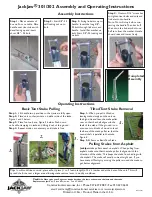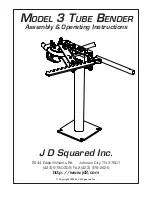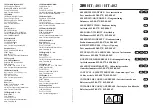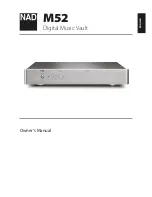
The format specification display shown in the following figure is from the
HP 16550A logic analyzer. Additional labels and pod assignments are listed
off the screen. Scroll vertically to view additional signals. Scroll horizontally
to view other pod-bit assignments. There may be some slight differences in
the display for your particular analyzer.
Logic Analyzer Format Specification
To display the configuration symbols
•
Using the mouse, right-click and hold on the instrument icon for the
logic analyzer. In the pop-up menu, slide down to "Symbol..." then
release the mouse button. Choose a label name from the "Label" list,
then select "User Defined Symbols...." The logic analyzer will display
the symbols associated with the label.
The HP E2466C configuration software sets up symbol tables. The tables
contain alphanumeric symbols which identify data patterns or ranges. Labels
simplify triggering on specific Pentium II processor cycles. The label base in
the symbols menu is set to hexadecimal to conserve display space.
All Pentium II processor signals are routed to the logic analyzer probe
headers or to extra headers. Labels that contain all lower case letters are
signals that are created by the preprocessor hardware; these signals are
described more fully in chapter 3, "Modes of Operation". Labels that begin
with an uppercase letter and have lower case letters within them are signals
that combine preprocessor generated signals and Pentium II processor
signals.
Figure 11
Displaying Information
To display the configuration symbols
2-4
Preprocessor Interface for the Pentium II Processor
Summary of Contents for E2466C
Page 10: ...1 Setting Up the Preprocessor Interface ...
Page 31: ...1 22 Preprocessor Interface for the Pentium II Processor ...
Page 32: ...2 Analyzing the Pentium II Processor ...
Page 53: ...2 22 Preprocessor Interface for the Pentium II Processor ...
Page 54: ...3 Preprocessor Interface Hardware Reference ...
Page 77: ...3 24 Preprocessor Interface for the Pentium II Processor ...
Page 78: ...A If You Have a Problem ...
















































